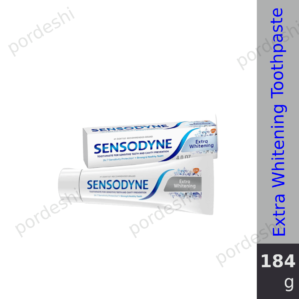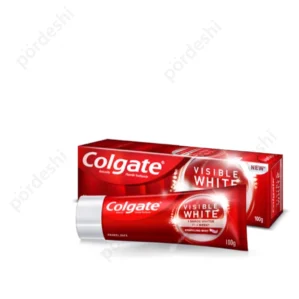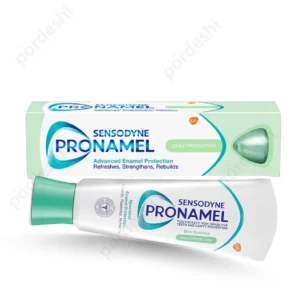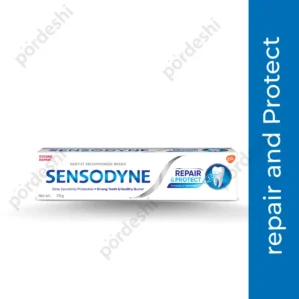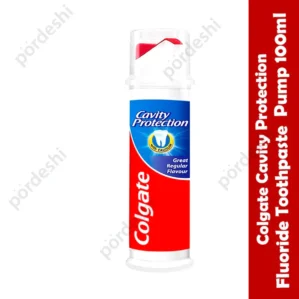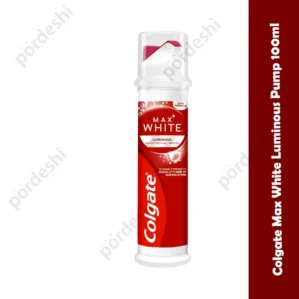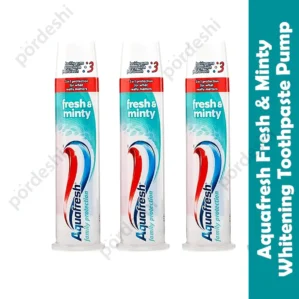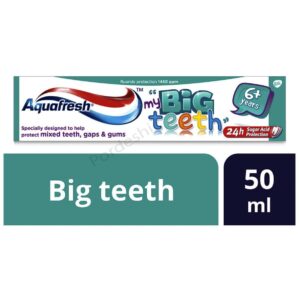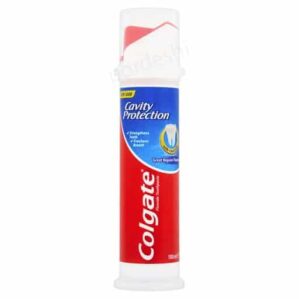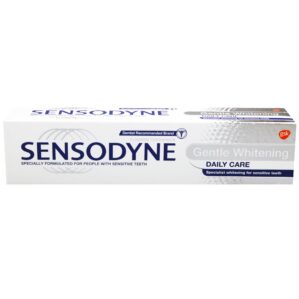Toothpaste
Showing 1–12 of 28 resultsSorted by latest
Sensodyne Pronamel Daily Protraction Toothpaste
Original price was: 800.00৳.699.00৳Current price is: 699.00৳.Colgate Cavity Protection Fluoride Toothpaste
Original price was: 420.00৳.389.00৳Current price is: 389.00৳.Aquafresh triple protection fresh & minty toothpaste
Original price was: 600.00৳.549.00৳Current price is: 549.00৳.Aquafresh my big teeth 6+ years toothpaste
Original price was: 300.00৳.290.00৳Current price is: 290.00৳.The Ultimate Guide to Toothpaste: Everything Dental Hygiene Enthusiasts Need to Know
Introduction
Welcome, dental hygiene enthusiasts! Whether you’re a seasoned expert or simply passionate about maintaining a dazzling smile, the importance of toothpaste in your oral care routine cannot be overstated. It plays a crucial role in preventing tooth decay, promoting gum health, and keeping our breath fresh. But with so many options on the market, selecting the right toothpaste for your specific needs can be daunting.
In this comprehensive guide, we’ll delve into the historical evolution of toothpaste, break down its essential ingredients, explore various types tailored to different dental needs, and discuss eco-friendly and natural alternatives. By the end of this post, you’ll be equipped with all the knowledge you need to make informed decisions about your oral care products.
The Evolution of Toothpaste
It has come a long way from its humble beginnings. Ancient civilizations used a variety of substances to clean their teeth, including crushed bones, oyster shells, and even burnt bread. The earliest known toothpaste formula dates back to ancient Egypt around 5000 BC, where a mixture of crushed rock salt, mint, dried iris flowers, and pepper was used.
Fast forward to modern times, and toothpaste has undergone significant innovations. The introduction of fluoride in the mid-20th century marked a pivotal moment, significantly reducing the prevalence of tooth decay. Today, It formulations are highly sophisticated, designed to address a range of dental issues from sensitivity to whitening.
Understanding Toothpaste Ingredients
It typically contains several key components, each playing a distinct role in oral care:
Abrasives
Constituting 8-20% of a typical toothpaste, abrasives like calcium carbonate and silica help remove plaque and surface stains from teeth, ensuring a thorough clean.
Fluorides
Fluoride is the most crucial active ingredient in preventing cavities. Sodium fluoride, stannous fluoride, and sodium monofluorophosphate are commonly used to strengthen enamel and resist decay.
Surfactants
Detergents like sodium lauryl sulfate (SLS) help create foam, ensuring the toothpaste spreads evenly in the mouth and enhances the cleaning process.
Antibacterial Agents
Ingredients like triclosan and zinc chloride are added to combat gingivitis and reduce tartar buildup.
Flavorants
Toothpaste comes in a variety of flavors to make brushing more enjoyable. Common flavors include peppermint, spearmint, and cinnamon, although exotic options like lavender and neem are also available.
Moisturizers and Binders
To prevent the toothpaste from drying out, ingredients like glycerol, sorbitol, and xylitol are included.
Specialty Ingredients
For specific needs, toothpastes may contain additional components like potassium nitrate for sensitivity or hydrogen peroxide for whitening.
Types of Toothpaste for Different Needs
Fluoride Toothpaste
Ideal for general use, fluoride toothpaste is excellent for cavity prevention and overall dental health.
Colgate Cavity Protection Fluoride Toothpaste
Whitening Toothpaste
Formulated with abrasives and sometimes mild bleaching agents, whitening toothpaste helps remove surface stains and brighten your smile.
USA Sensodyne Extra Whitening Toothpaste 184g
Sensodyne daily care gentle whitening toothpaste
Colgate Visible White Toothpaste
Colgate Max White Luminous Pump
Aquafresh Fresh & Minty Whitening Pump Toothpaste
Sensitivity Toothpaste
Containing ingredients like potassium nitrate or strontium chloride, this type of It is designed to reduce tooth sensitivity.
Sensodyne Repair and Protect Toothpaste
sensodyne Complete protection
Natural Toothpaste
Free from artificial ingredients, natural toothpaste often includes components like baking soda, aloe vera, and essential oils. These toothpastes are perfect for those seeking a more organic approach to oral care.
Dabur Red Toothpaste
Children’s Toothpaste
Tailored for young users, children’s toothpaste typically has lower fluoride levels and fun flavors to encourage proper brushing habits.
Aquafresh my big teeth 6+ years toothpaste
Aquafresh little teeth toothpaste
Aquafresh milk teeth toothpaste
Charcoal Toothpaste:
Colgate Charcoal White Toothpaste
The Environmental Factor: Eco-Friendly Toothpaste
Traditional toothpaste packaging and ingredients can have a significant environmental impact. Single-use plastic tubes contribute to landfill waste, and some ingredients, like microbeads, have been harmful to aquatic life.
Smoking Toothpaste:
Zact Whitening Toothpaste
Zact Smokers Toothpaste
Eco-Friendly Alternatives
- Zero-Waste Packaging: Some brands offer toothpaste in recyclable or biodegradable packaging, such as metal tubes or glass jars.
- Natural Ingredients: Opt for toothpastes that use sustainably sourced, natural ingredients free from harmful chemicals.
- Toothpaste Tablets: An innovative solution, toothpaste tablets eliminate the need for tubes and are perfect for travel.
Switching to eco-friendly toothpaste options not only benefits your oral health but also contributes to a healthier planet.
The Importance of Natural Dental Care
Natural toothpaste has gained popularity for its gentle, yet effective, approach to oral hygiene. These products often exclude artificial preservatives, sweeteners, and colorants, making them a suitable choice for those with sensitivities or allergies.
Benefits of Natural Toothpaste
- Meswak, Charchol: It is ancient Ingredients.
- Gentle on Gums: Natural ingredients are less likely to cause irritation.
- Fewer Allergens: Free from synthetic additives, natural toothpaste reduces the risk of allergic reactions.
- Sustainable: Many natural toothpaste brands prioritize eco-friendly practices, from sourcing to packaging.
Incorporating natural dental care into your routine can be a refreshing change, promoting both oral and environmental health.
Best Practices for Using Toothpaste
To maximize the benefits of your chosen toothpaste, follow these best practices:
Brushing Technique
- Use a Soft-Bristled Brush: Gentle on gums and effective at removing plaque.
- Brush for Two Minutes: Ensure you cover all surfaces of your teeth.
- Angle the Brush: Hold your toothbrush at a 45-degree angle to your gums for optimal cleaning.
Amount of Toothpaste
- Adults: A pea-sized amount is sufficient.
- Children: Use a rice grain-sized amount for kids under three and a pea-sized amount for those aged three and up.
Complementary Oral Care
- dental Floss Daily: Removes plaque and food particles between teeth.
- Rinse with Mouthwash: Helps kill bacteria and freshen breath.
- Regular Dental Check-Ups: Visit your dentist every six months for professional cleanings and exams.
Conclusion
Understanding toothpaste’s role in dental hygiene, its diverse formulations, and how to choose the best one for your needs is crucial for maintaining optimal oral health. From historical origins to modern advancements, It remains a cornerstone of daily dental care. Whether you prefer traditional or natural options, selecting a toothpaste that aligns with your specific dental requirements and environmental values can make a significant difference.
Ready to take your oral care routine to the next level? Explore the variety of toothpaste options available and find the perfect match for your needs. Remember, a healthy smile begins with the right one!
For more insights on dental care and hygiene tips, stay tuned to our blog and feel free to reach out with any questions or comments. Happy brushing!



 Hair Care
Hair Care
 Vibrating Rings
Vibrating Rings

 Oral Care
Oral Care

